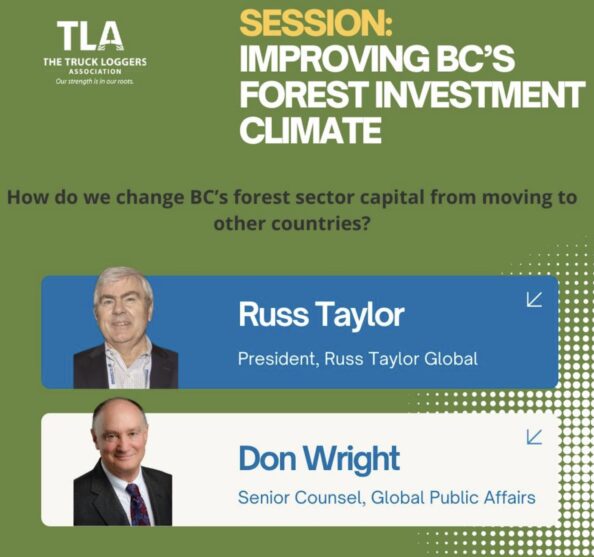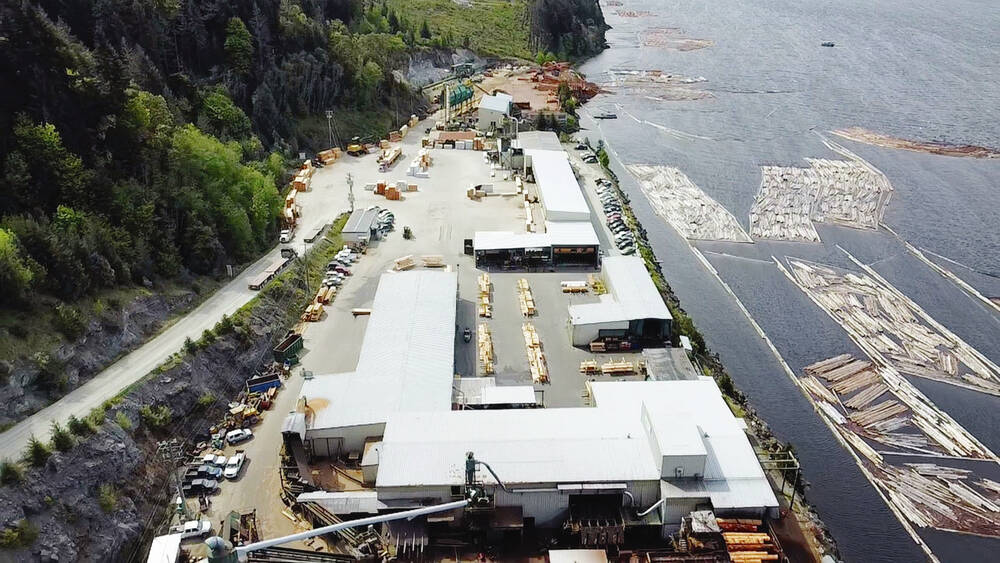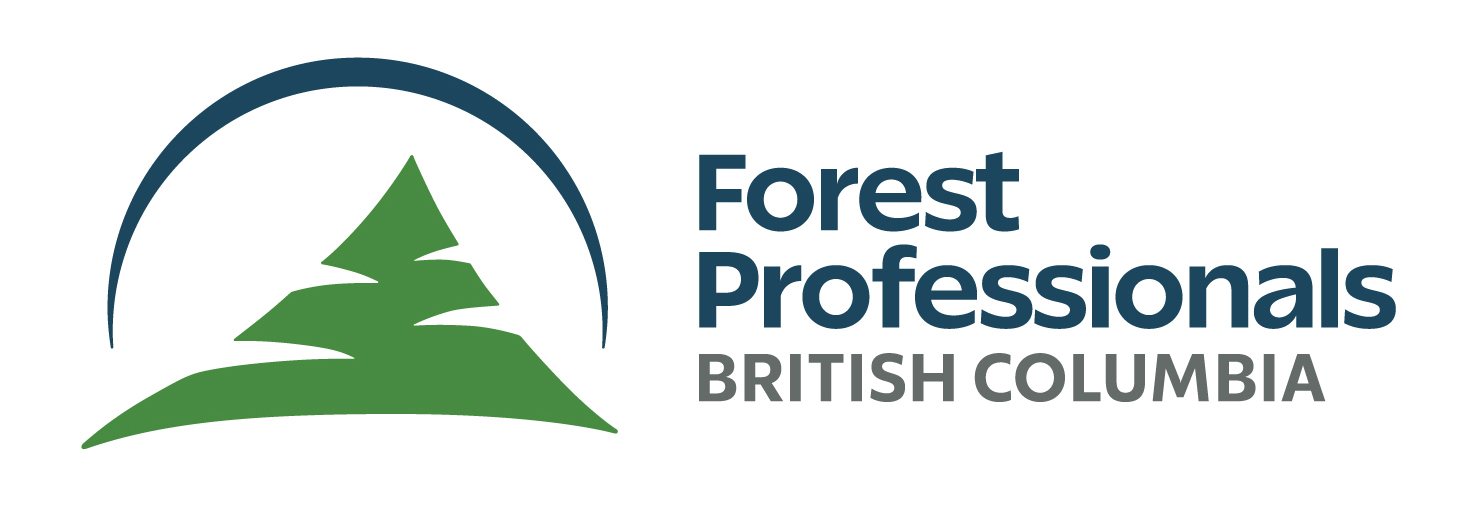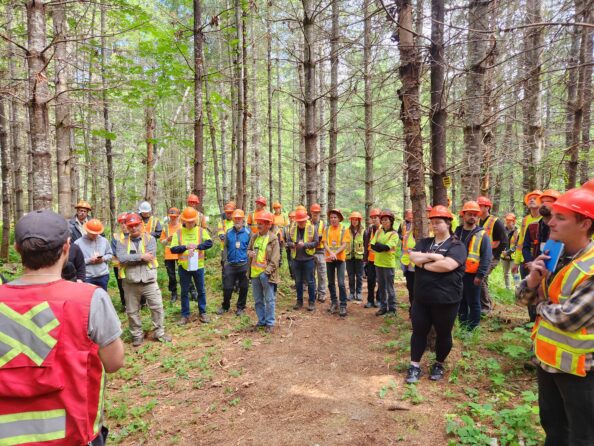 On Day 1 of the Truck Loggers Association 80th Annual Convention, Russ Taylor and Don Wright tackled the pressing question: How do we change BC’s forest sector capital from moving to other countries? Moderated by Vancouver Sun columnist Vaughn Palmer, the session provided critical insights into the sector’s challenges and potential solutions. Taylor highlighted a stark decline in BC’s forest sector, driven by reduced timber supply, outdated stumpage systems, and costly regulations. He noted that BC’s sawmills are operating below profitable capacities, while regions like the US South thrive due to ample timber and lower costs. Urging reform, Taylor called for streamlined cutting permits and policies that attract investment rather than drive it away. Wright focused on the complexity of government decision-making, describing it as “loosely controlled chaos.” He emphasized the need for sustained advocacy, encouraging industry players, unions, First Nations, and communities to unite and influence policy through persistence and collaboration. Both speakers underscored the importance of collective action to ensure a competitive and sustainable future for BC’s forest sector.
On Day 1 of the Truck Loggers Association 80th Annual Convention, Russ Taylor and Don Wright tackled the pressing question: How do we change BC’s forest sector capital from moving to other countries? Moderated by Vancouver Sun columnist Vaughn Palmer, the session provided critical insights into the sector’s challenges and potential solutions. Taylor highlighted a stark decline in BC’s forest sector, driven by reduced timber supply, outdated stumpage systems, and costly regulations. He noted that BC’s sawmills are operating below profitable capacities, while regions like the US South thrive due to ample timber and lower costs. Urging reform, Taylor called for streamlined cutting permits and policies that attract investment rather than drive it away. Wright focused on the complexity of government decision-making, describing it as “loosely controlled chaos.” He emphasized the need for sustained advocacy, encouraging industry players, unions, First Nations, and communities to unite and influence policy through persistence and collaboration. Both speakers underscored the importance of collective action to ensure a competitive and sustainable future for BC’s forest sector.

 Rhonda Millikin, an award-winning ecologist who has questioned Whistler’s approach to wildfire mitigation, was issued a cease-and-desist letter last month from Forest Professionals British Columbia (FPBC), which said she is not certified to offer forestry advice. The FPBC said in its Dec. 14 letter that Millikin was unlawfully engaged in the reserved practice of professional forestry by providing advice and recommendations to the RMOW to limit or cease forest fuel-thinning efforts. “On principle, we don’t have an issue with people, whether a member of the public or someone from a different profession, researching or holding opinions or even talking about those opinions,” explained Casey Macaulay, the FPBC’s registrar and director of act compliance, who authored the cease-and-desist letter. “Where it’s an issue is when they start to advocate for a particular practice, and in this case, where that practice is so out of sync with the current science and the current practice of protecting communities from wildfires.”
Rhonda Millikin, an award-winning ecologist who has questioned Whistler’s approach to wildfire mitigation, was issued a cease-and-desist letter last month from Forest Professionals British Columbia (FPBC), which said she is not certified to offer forestry advice. The FPBC said in its Dec. 14 letter that Millikin was unlawfully engaged in the reserved practice of professional forestry by providing advice and recommendations to the RMOW to limit or cease forest fuel-thinning efforts. “On principle, we don’t have an issue with people, whether a member of the public or someone from a different profession, researching or holding opinions or even talking about those opinions,” explained Casey Macaulay, the FPBC’s registrar and director of act compliance, who authored the cease-and-desist letter. “Where it’s an issue is when they start to advocate for a particular practice, and in this case, where that practice is so out of sync with the current science and the current practice of protecting communities from wildfires.” The Coast Silviculture Committee is an ad hoc organization of forest professionals whose prime objective is to disseminate current technical forest management and silvicultural information to all forest practitioners and the public in coastal British Columbia. Its membership includes corporate, government, and self-employed professional foresters and forest technologist, forestry educators, forest land owners, researchers, and tenure managers. Every year the CSC holds two meetings; a short, one or two day, information meeting in winter, and a slightly longer field based technical workshop in early to mid- June; summer meetings are held in a different part of the coast each year. All of the surplus funds from workshops go towards supporting development of silvicultural expertise in students at the post-secondary level through providing of awards. The Winter 2025 workshop is scheduled for February 19 at Vancouver Island University.
The Coast Silviculture Committee is an ad hoc organization of forest professionals whose prime objective is to disseminate current technical forest management and silvicultural information to all forest practitioners and the public in coastal British Columbia. Its membership includes corporate, government, and self-employed professional foresters and forest technologist, forestry educators, forest land owners, researchers, and tenure managers. Every year the CSC holds two meetings; a short, one or two day, information meeting in winter, and a slightly longer field based technical workshop in early to mid- June; summer meetings are held in a different part of the coast each year. All of the surplus funds from workshops go towards supporting development of silvicultural expertise in students at the post-secondary level through providing of awards. The Winter 2025 workshop is scheduled for February 19 at Vancouver Island University.